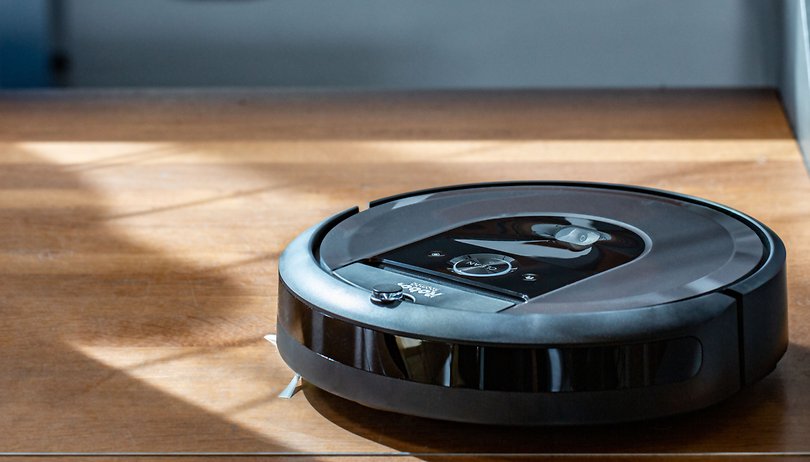#TBT - The history of cleaning robots began in... 1985?


A fully automatic vacuuming robot that can move around the house on its own? Nowadays you might think it's pretty normal. What if I told you that it was not an invention of recent years, but that it dates back to 1985?
For a lot of people, the words robot vacuum cleaner and Roomba are synonymous. This is because of the perception that the iRobot brand has managed to establish perfectly throughout the world, establishing itself as the undisputed leader of this market almost immediately. However, contrary to what many may think, Roomba is by no means the first brand of vacuum cleaner robots to appear on the scene.
From toy to worker
Even over a hundred years ago, futurists and appliance companies theorized about machines that could automatically and daily clean the floor. However, although at the time a fully automated robotic vacuum cleaner was only a distant dream, already in 1985 it was possible to see a first example, the Tomy Dustbot. This robot was equipped with an integrated vacuum cleaner that could vacuum out small portions of dirt.
Used more as a toy than a real household appliance, in 1991 another vacuum cleaner robot appeared, the FloorBot, impractical because of its size, but which was already able to integrate the innovative sensors that transformed the invention into a real revolution in the field of floor cleaning.

Electrolux Trilobite: the first Roomba
However, the first real robot to enter the market on a large scale was the Trilobite in 2001, produced and distributed by Electrolux, a famous Swedish manufacturer of home appliances and professional equipment. This device first appeared in 1996 during an episode of the BBC's Tomorrow's World television program, and also proved to be quite valid in a number of respects, including suction power.
The Trilobite contained a vacuum cleaner and a removable roller brush that could work decently even on long-haired carpets. In addition, he already had the ability to map rooms, avoid obstacles using ultrasonic sensors and was able to automatically return to his base to recharge. Finally, a simple LCD display positioned on its surface even indicated the need to empty the tank or not.
His ultrasonic sensors were designed to allow him to get a few inches from objects without ever colliding with them. However, the Trilobite was not particularly reliable in this respect and failed quite easily, especially when objects or walls formed a sharp angle. In this case, in fact, the ultrasonic ray was not reflected and the Trilobite "broke down" near the obstacle or remained so far away as to leave some dirty areas.
Finally, this robot had infrared sensors at the bottom to prevent falling from stairs or ledges and was provided with some magnetic strips that were to be used to block areas where the Trilobite should not enter.
2001: iRobot wipes out Electrolux's dreams
Some of these problems were solved with the second version of the same robot, made available in 2004, but unfortunately, it was not enough to counter the advance of the main antagonist, iRobot. Although it has to be said that the first robots of the American manufacturer, launched in 2001, were not exactly as "smart" as they are today, the main reason why iRobot was able to discourage the purchase of a Trilobite was the price.
-
Will the smartest homes lead to domestic happiness?

Yes, the first Roomba robots cost about $160, practically less than a tenth of what Electrolux was asking for its Trilobite ($1,700). The strategy of the American company worked great: practically anyone was able to buy a vacuum cleaner robot, a key factor that allowed iRobot Roomba to easily enter the homes of users and impose itself on a perceptual level as "the vacuum cleaner robot", similar to how Hoover had done with their brand previously.
Electrolux wanted to try again several years later with the successor to the Trilobite, the MotionSense, which first appeared in 2017. It was decidedly too late, mainly because the fast-growing market attracted a large number of new players, making it different in different categories (low, medium and high). Finally, not least factor, Electrolux over the years has been perceived by more users as an experienced manufacturer of kitchen appliances and professional equipment, far from cleaning.
The current situation
From the arrival of the first vacuum cleaner robot, the original Electrolux Trilobite, to the present day, technology has changed dramatically. The various manufacturers have made enormous progress and have allowed their devices to undergo a series of technological advances impossible to achieve in the past.
One example is certainly the improvement of the various sensors, now increasingly sophisticated, accurate and equipped with lasers and software features such as visual navigation, decreasing the chances that the owner can return home and find the floor dirty because of the fact that the robot is stuck in a corner in the middle of cleaning.

However, like any smart appliance, vacuum cleaners have their drawbacks. For example, they certainly need more time to clean a room than a standard vacuum cleaner, you need to have a high budget to buy one of the best around, they can't clean the stairs and some of them still have problems with thicker carpets today.
In short, although innovation in this area has continued, vacuum cleaners, even the most expensive of all, cannot replace a real vacuum cleaner. Yes, to keep the house 100% clean you will still have to rely on the past and I can confirm it myself as the owner of an iRobot Roomba i7+ that costs "only" $1,099.99.
If you think that a vacuum cleaner robot is suitable for your home, the next step is to find the right one for you, not exactly a simple decision, given the options available, turning the choice almost into a challenge.













